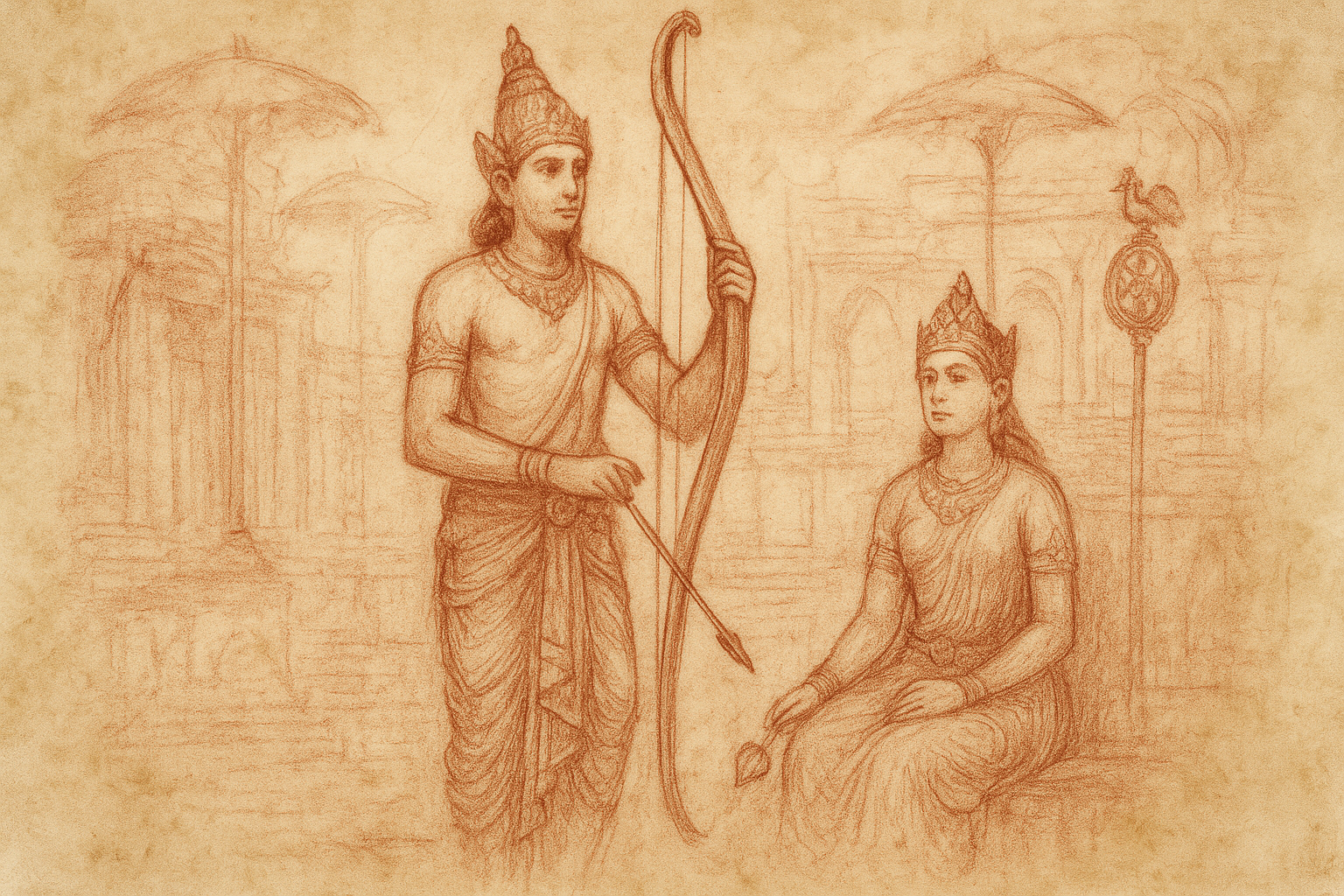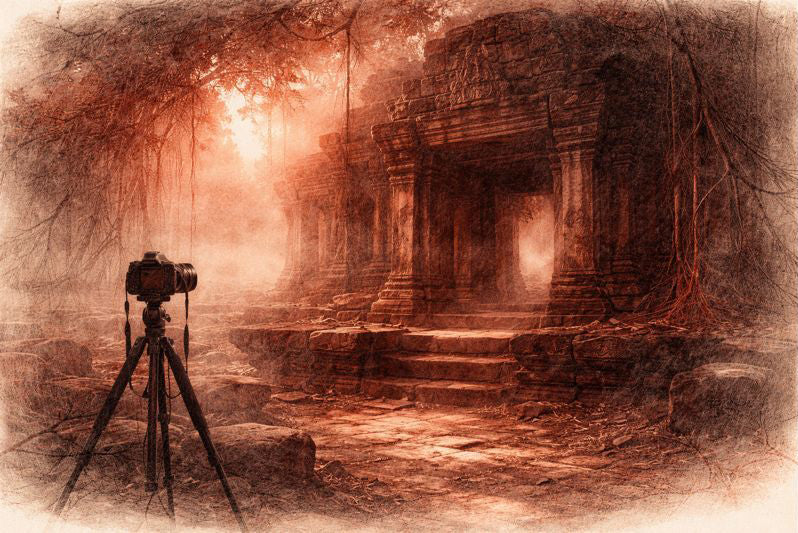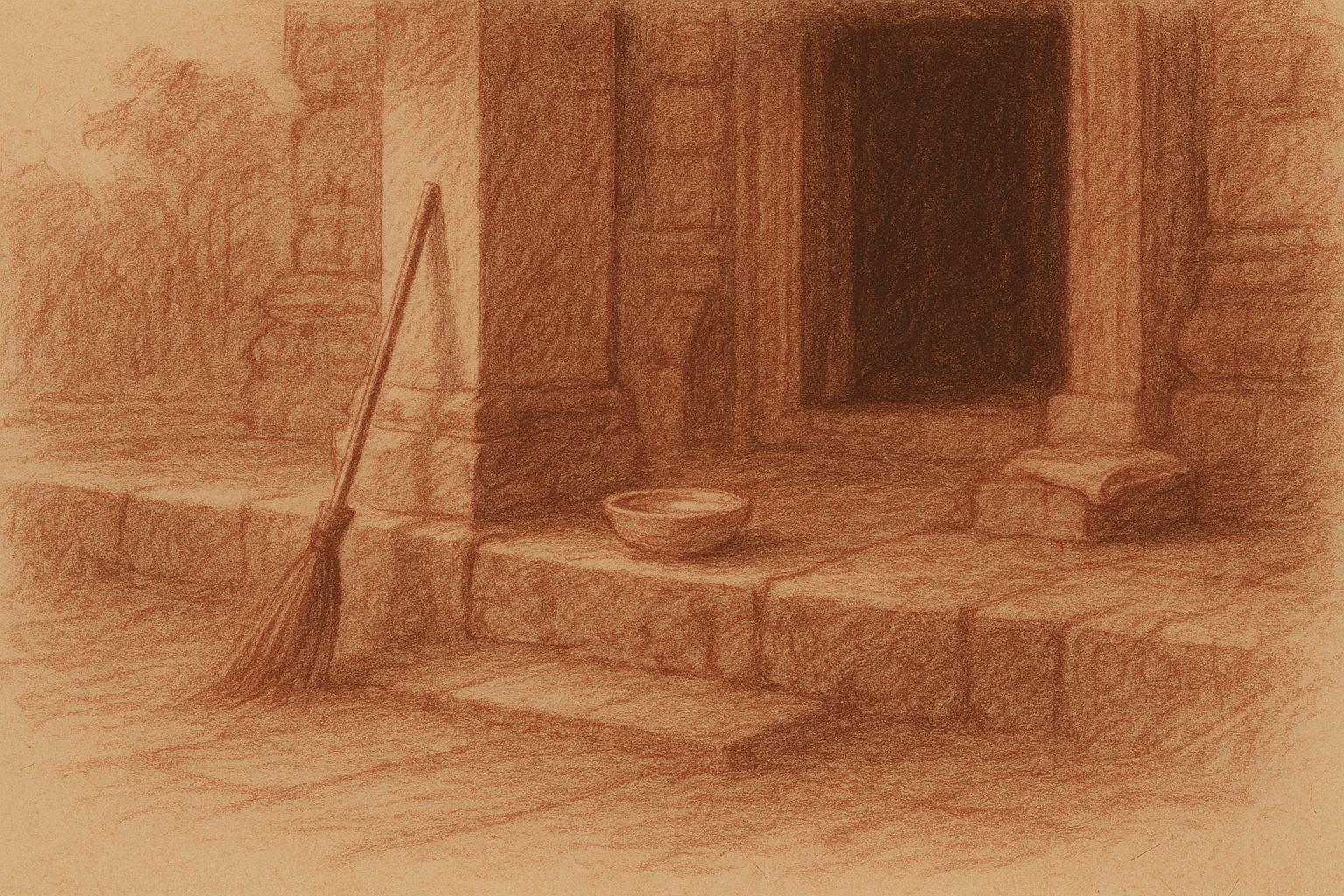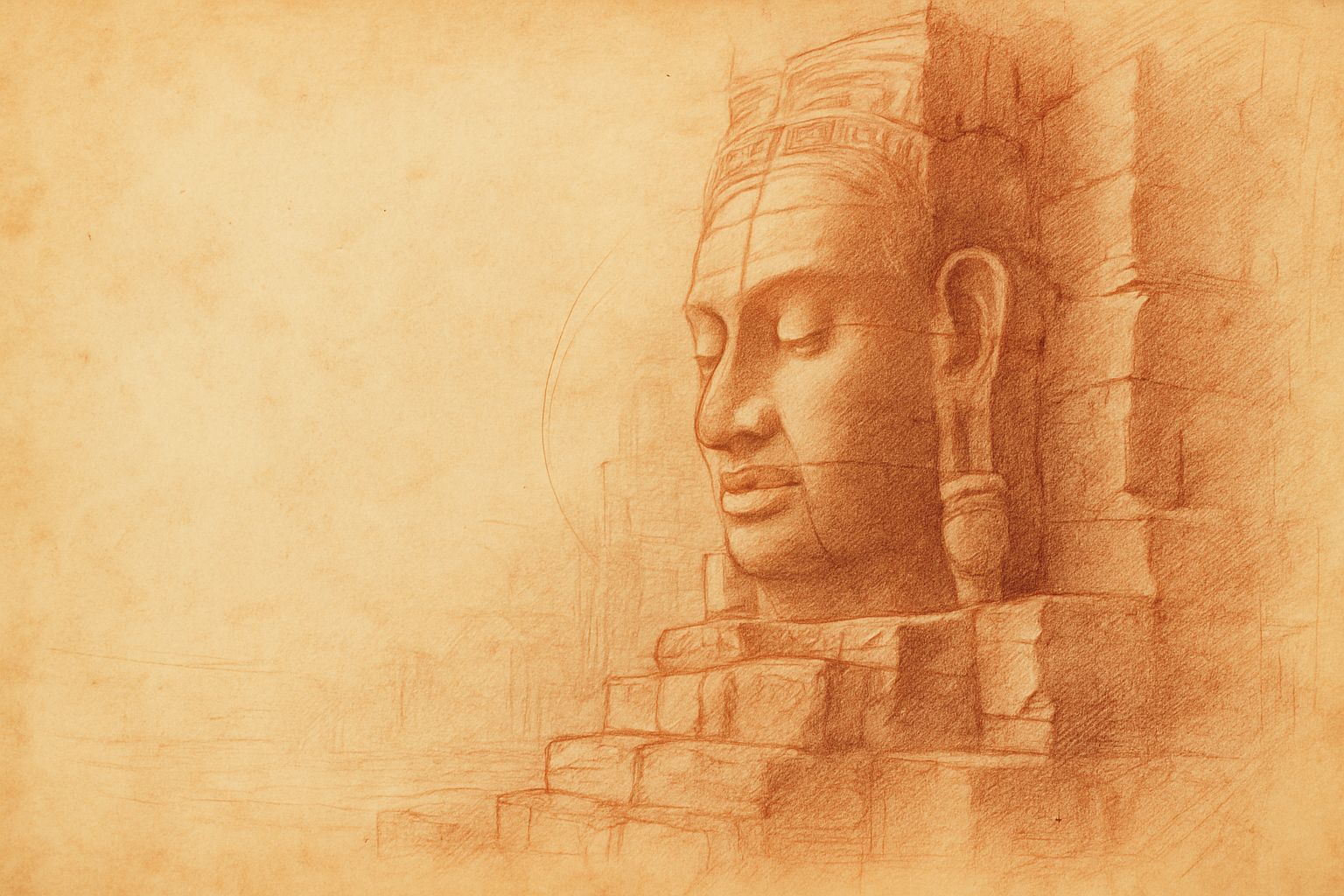Complimentary worldwide shipping on orders over $400 · No import tariffs for most countries
Complimentary worldwide shipping on orders over $400 · No import tariffs for most countries

The Bow That Thundered
3 min read
Sanctuary of Meaning · Artist’s Journal
“He came not with thunder, but the thunder followed.”
—from a field note in the northwestern pavilion of Angkor Wat
—
There are moments when the earth is asked to bear witness.
In the court of Mithila, beneath parasols and fans of peacock feather, the suitors gathered—crowned and robed, proud of shoulder and sure of hand. All had come for Sita. And all had failed.
For before them stood something older than ambition: a bow of godly origin, long kept in silence. It was said to be the bow of Shiva himself—too heavy for kings, too sacred for ceremony. It had not spoken in lifetimes. But today, it would sing.
King Janaka, sovereign of that land of gardens and dharma, offered the challenge not as spectacle, but as prayer. His daughter, Sita—born of furrowed earth and touched by light—would wed only the one whose strength was not of force, but of truth. Not by decree, but by her own still vow.
And so it was not might that brought Rama forward. Nor desire.
It was the grace of inevitability.
He stepped into the court not as contender,
but as answer.
—
From where she sat—crowned in the shape of the trinity, her sarong folding like a petal, a lotus curled in one hand—Sita did not watch the bow.
She watched the stillness.
Rama bowed to the sages. His silence was not emptiness, but remembrance—a vow kept in another life. He approached the bow not as test, but as one who already knew the song it would sing.
Five hundred men had once carried it.
He lifted it with one hand.
Then, without flourish,
he strung it.
The string met the notch.
The arrow met the silence.
And the bow—
broke.
Like the sound of the sky remembering itself.
It did not splinter.
It thundered.
Princes fell to the ground. Parasols trembled. Garlands scattered like startled birds. Even the gods, perhaps, turned to listen.
But Sita did not flinch.
Her vow had been kept by another’s vow.
In Rama, she recognised the dharma that mirrored her own.
It was not a moment of romance, but of return.
Not love at first sight, but something older.
The wedding followed.
But that was not the moment.
The moment was the thunder.
The moment was the gaze exchanged across the court—
though her eyes never left the viewer’s.
—
At Angkor Wat, the sandstone holds the silence.

The Svayamvara of Sita, Angkor Wat Temple, Cambodia
Top two registers of the relief in the northwestern pavilion, where Rama raises the bow and Sita sits composed—still as vow, calm as lotus.
In the northwestern pavilion, five registers of relief rise like breath along a sacred wall. On the highest tier, Rama stands larger than all. His bow is raised. His stance, composed. His gesture, poised. The sculptor does not carve the breaking—only the echo.
The Khmer tell the tale in their own tongue. The target is a bird atop a wheel atop a pole—a motif drawn not from Valmiki, but from the Reamker, Cambodia’s flame-carried version of the Ramayana. Yet the silence is the same.
Beside Rama, Sita sits in perfect poise. Her gaze is not turned toward him, but outward—toward us. Around her, court ladies gather with fans, arms crossed like votive offerings. Below, Janaka reclines on a lotus-plinth, a flower in his hand. Rows of princes sit quietly with their unbent bows. Beneath them, warriors mirror each other in still formation. At the lowest tier, servants ready horses and chariots for the journey to come. The ground is already stirring.
And yet—
all this is still.
The sandstone does not shake.
But it remembers.
Rama has drawn the bowstring.
And in this temple, across centuries,
we are still waiting for the sound.
—
Bow lifted like breath—
the silence before thunder breaks,
Sita does not blink.
—
Also in Library

Before the Shutter Falls
3 min read
Before the shutter falls, fear sharpens and doubt measures the cost of waiting. In the quiet hours before dawn, the act of not-yet-beginning becomes a discipline of attention. This essay reflects on patience, restraint, and the quiet mercy that arrives when outcome loosens its hold.

Those Who Keep the Way Open — On the Quiet Guardians of Angkor’s Thresholds
3 min read
Quiet gestures shape the way into Angkor — a swept stone, a refilled bowl, a hand steadying a guardian lion. This essay reflects on the unseen custodians whose daily care keeps the thresholds open, revealing how sacredness endures not through stone alone, but through those who tend its meaning.

Multiplicity and Mercy — The Face Towers of Jayavarman VII
5 min read
A new vision of kingship rises at the Bayon: serene faces turned to every horizon, shaping a world where authority is expressed as care. Moving through the terraces, one enters a field of steady, compassionate presence — a landscape where stone, light, and time teach through quiet attention.
Join My Studio Journal
Receive occasional letters from my studio in Siem Reap—offering a glimpse into my creative process, early access to new fine art prints, field notes from the temples of Angkor, exhibition announcements, and reflections on beauty, impermanence, and the spirit of place.
No noise. No clutter. Just quiet inspiration, delivered gently.
Subscribe and stay connected to the unfolding story.

Join My Studio Journal
Receive occasional letters from my studio in Siem Reap—offering a glimpse into my creative process, early access to new fine art prints, field notes from the temples of Angkor, exhibition announcements, and reflections on beauty, impermanence, and the spirit of place.
No noise. No clutter. Just quiet inspiration, delivered gently.
Subscribe and stay connected to the unfolding story.
